Everything You Need to Know About Cannabis Transdermal Patches
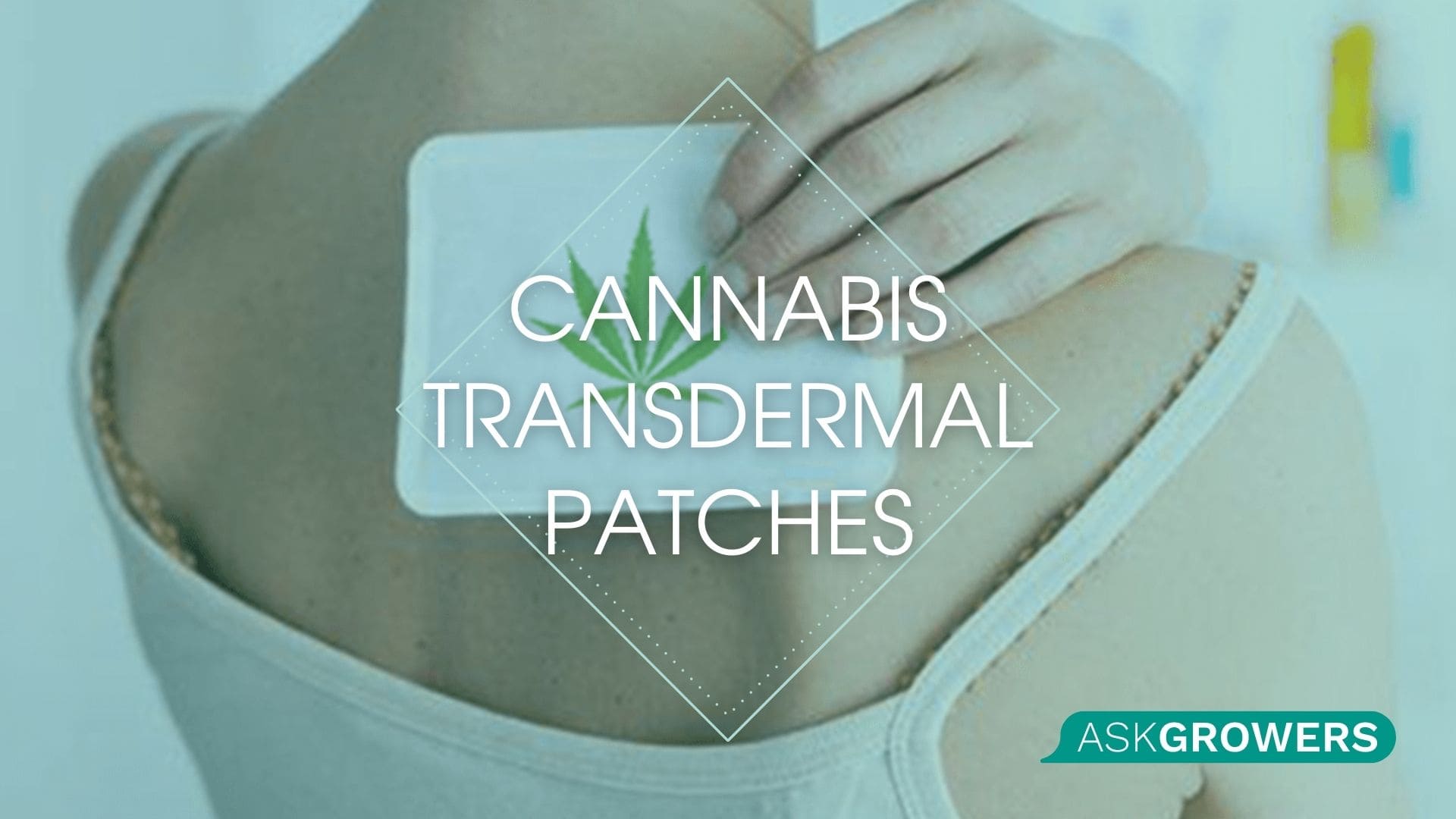
- What Types of Transdermal Cannabis Patches Are Out There?
- How Does Transdermal THC Absorption Work?
- How to Use Cannabis Skin Patches?
- Do Cannabis Patches for Pain Work?
- What Are the Risks of Using Transdermal THC Patch?
- Do THC Patches Get You High?
- How to Choose Weed Patches for Pain Relief
- Conclusion
Cannabis transdermal patches can be a very convenient application method for patients. Transdermal patches are larger than your standard topical lotion but are also easy to hide from plain sight. While these patches may have a kitsch factor, whether you're using cannabis for pain management or not. The benefits of transdermal cannabis-infused patches should be seen as one of the many methods available to treat your ailment efficiently and discreetly.
Transdermal cannabis-infused patches are easier to use than other traditional marijuana consumption methods: no smoke or vapor involved. Using a transdermal patch is like having a designated driver in your everyday life – putting your problems on cruise control to focus on bettering your day-to-day.
Read Also: Ways to Consume Marijuana: The Definitive Guide
What Types of Transdermal Cannabis Patches Are Out There?
Generally, the types of transdermal cannabis patches vary in a number of ways, and they can generally be divided into the following three categories:
- Cannabis Patches with Centrally-Acting THC (THC-C)
- Cannabis Patches with Centrally-Acting CBD (CBD-C)
- Cannabis Patches with Isolated Cannabinoids
Each of these three categories has an array of sub-categories based on the type of cannabinoids that are infused as well as the method of delivery. There are two main types of cannabis transdermal patches: THC and CBD. The difference between the two is that THC patches contain THC, which is a psychoactive ingredient in cannabis that makes you feel euphoric, while CBD patches do not contain THC.
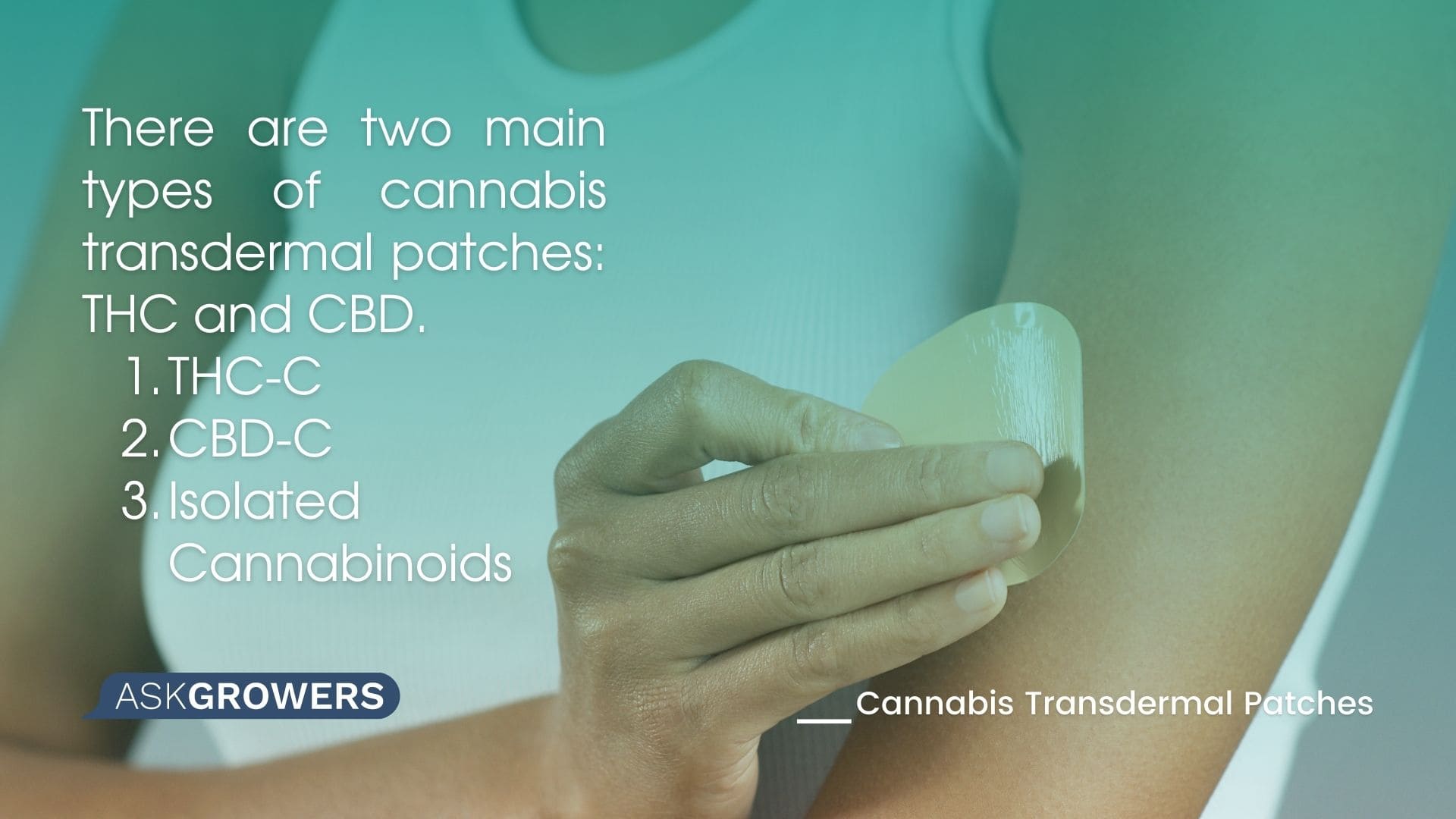
Commonly, users make their choice regarding the effects they’re seeking. For instance, if you want to reduce inflammation, you might opt for CBD. If you have trouble sleeping and want to relax, you might opt for CBN.
How Does Transdermal THC Absorption Work?
Transdermal technology is nothing new. A few popular examples include nicotine and birth control patches that provide small, consistent doses of medication throughout the day. However, transdermal marijuana patches are a relatively new development in cannabis.
On the market are very popular and relevant are hemp creams, ointments, and lotions. They are ideal for initial care and skin treatments. However, the mere friction of the cream will not deliver the active phytocannabinoids into the blood. Topical creams, instead, operate in a localized area and cannot penetrate the deepest layers of the skin. On the contrary, transdermal patches work by providing a concentrated dose of medication at a particular location for long periods, and over time, the skin absorbs high concentrations of medication.
As the medication penetrates the deepest layer of the skin, it enters the capillaries and blood vessels. From there, substances like isolated cannabis can be distributed through the bloodstream.
Read Also: How to Make a Homemade Waterfall Bong: Step-by-Step Guide
How to Use Cannabis Skin Patches?
Apply the patch on clean, dry skin where it will be comfortable and won't move around too much — like on your arm or leg. You'll want to ensure enough room for the patch to stick securely (which means choosing an area with thick skin).
Some people use a bandage over the top of their patch while they sleep at night because this helps keep the patch in place and ensures that it doesn't fall off at night. Others prefer not to use one, so they don't have anything on their skin while they sleep through the night! Once you've applied your transdermal patch, wait 20 minutes before washing your hands so that all traces of oil from your fingers don't accidentally ruin it.
Avoid applying a cannabis patch to a hairy area. This is because hair follicles may interfere with the absorption of the medication. Besides, the sticky part of the patch may cause discomfort when you remove it, which are not pleasant sensations.
Read Also: How to Smoke a Weed Pipe
Do Cannabis Patches for Pain Work?
So, what are CBD patches used for? Although CBD’s effect on pain is still being studied, early findings suggest that it may reduce inflammation and ease the pain of arthritis and multiple sclerosis. Cannabidiol (CBD) and other cannabinoids have two distinct mechanisms of action against aches. First, they target the endocannabinoid system in the body that has a large role in how we perceive pain signals by blocking receptors related to various types of pain. Besides acting as an analgesic, cannabis also activates the endocannabinoid system, making it more receptive to painkillers. Second, CBD may reduce inflammation in the body, which could help decrease pain.
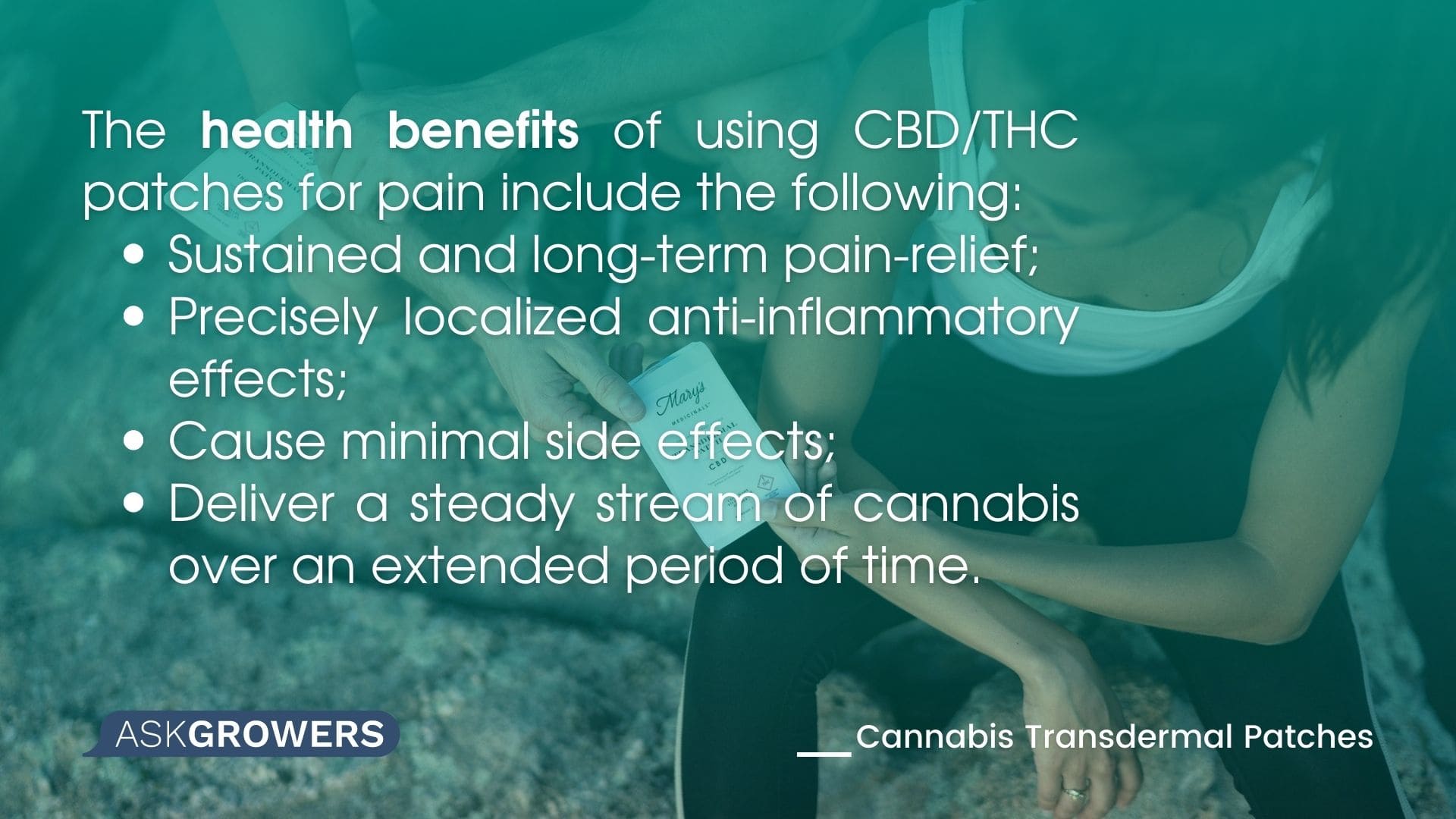
The health benefits of using CBD/THC patches for pain include the following:
- Sustained and long-term pain-relief;
- Precisely localized anti-inflammatory effects;
- Cause minimal side effects;
- Deliver a steady stream of cannabis over an extended period of time.
Besides, over half of the patients who added cannabidiol to their treatment regimens reduced or eliminated their use of prescription opioids after an 8-week period. As CBD use becomes more widespread, larger studies may help explore whether the compound can help reduce some of the risks posed by other pain management methods. One patch is enough to make you feel the effects of either compound without having to worry about overdoing it. With one patch, you can get a full day's worth of anti-inflammatory, anti-anxiety, and pain relief in an easy-to-use format.
What Are the Risks of Using Transdermal THC Patch?
Cannabis transdermal patches are not meant to be used by people who have never used cannabis before. Pregnant women should also not use them until more research has been conducted, as there is insufficient evidence regarding their effects on a human fetus.
Do THC Patches Get You High?
The short answer is “no.” The detailed answer lies in science. The active ingredients in the patch are absorbed through the skin and into your bloodstream, where they enter your endocannabinoid system (ECS). This network of receptors regulates mood, memory, appetite, sleep patterns, and pain perception. When these receptors are activated by cannabinoids in an external source like a transdermal patch (or other products like topical creams), they deliver their therapeutic effects without producing any psychoactive effects — so you won't get high when using these products.
In contrast to smoking weed, the canabis patch slowly releases its compounds. Following this contrast, smoking or evaporation of marijuana haze tends to provide an intense high for shorter periods.
How to Choose Weed Patches for Pain Relief
Understanding the basic facts of cannabis transdermal patches is crucial if you want to make the best CBD patches purchase decision. You've probably noticed the differences in the various types of patches and powders around, or maybe you just want to know why they're so popular lately.
The best way to choose the right cannabis transdermal patch for you is to contact your doctor or healthcare provider, who will let you know which would work best for your condition or symptoms. This way, they can recommend one that will help relieve your pain without causing any unwanted side effects such as drowsiness or dizziness, which, for instance, could make driving dangerous.
Read Also: How to Smoke Weed Out of a Bong
Conclusion
Cannabis-infused transdermal patches are becoming a popular way to medicate. They are small adhesive strips that contain cannabis oil and THC or CBD. The patches can be applied directly to the skin and left on for up to 24 hours at a time. Cannabis transdermal patches are a great way to get the benefits of cannabis without smoking it and inhaling the smoke. They can be administered through the skin, so you don't have to worry about any lung irritation or other issues that come with smoking.

 Guides
Guides


.png)
.png)



 (1).png)

.jpg)

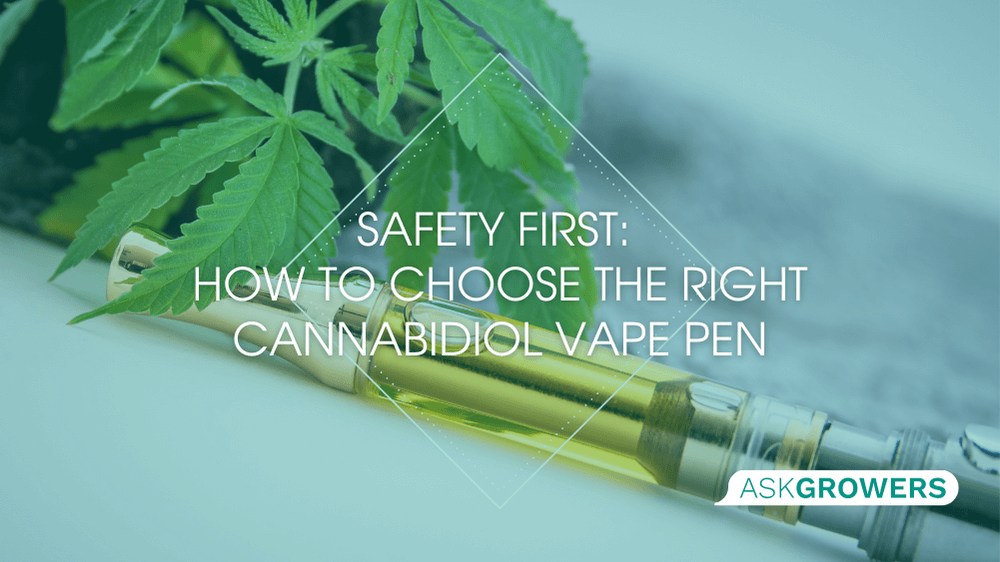
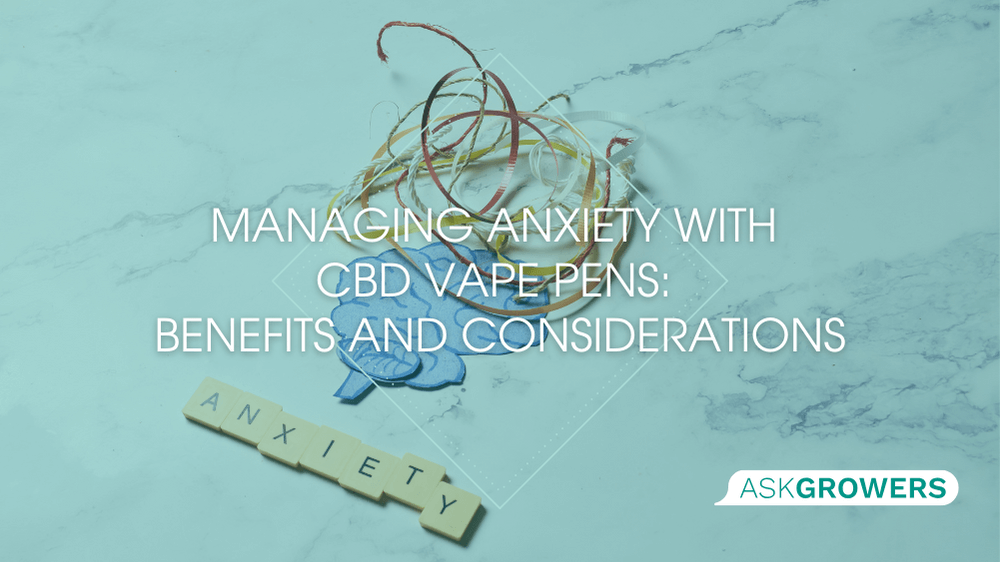
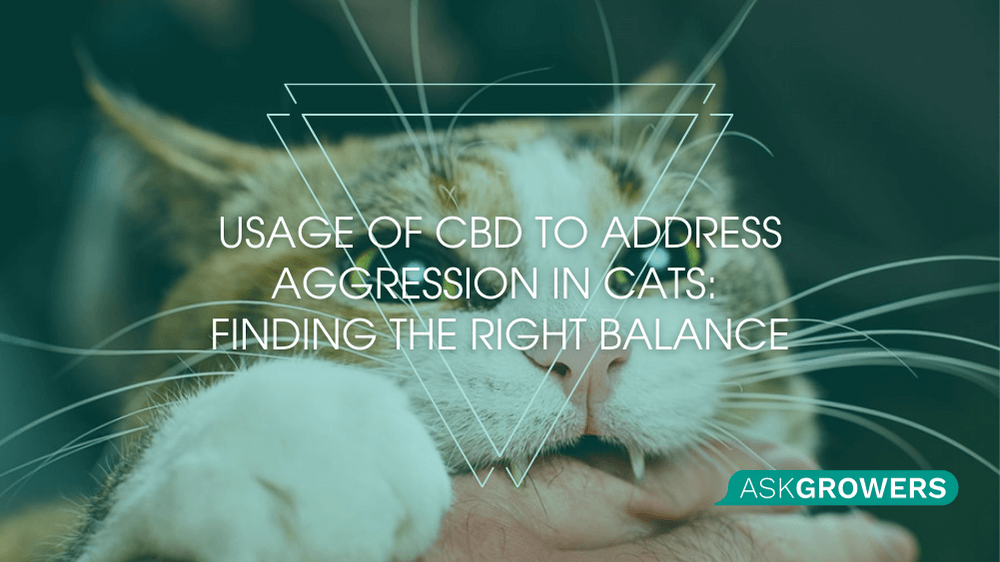

Be the first and share your opinion
Write a Review